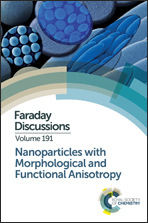Studying nanoparticles’ 3D shape by aspect maps: Determination of the morphology of bacterial magnetic nanoparticles
Abstract
Magnetic nanoparticles (MNPs) are widely investigated due to their potential use in various applications, ranging from electronics to biomedical devices. The magnetic properties of MNPs are strongly dependent on their size and shape (i.e., morphology), thus appropriate tools to investigate their morphology are fundamental to understand the physics of these systems. Recently a new approach to study nanoparticle morphology by Transmission Electron Microscopy (TEM) analysis has been proposed, introducing the so-called Aspect Maps (AMs). In this paper, a further evolution of the AM method is presented, allowing determination of the nanoparticles’ 3D shape by TEM image. As a case study, this paper will focus on magnetite nanoparticles (Fe3O4), with a mean size of ∼45 nm extracted from Magnetospirillum gryphiswaldense magnetostatic bacteria (MTB). The proposed approach gives a complete description of the nanoparticles’ morphology, allowing estimation of an average geometrical size and shape. In addition, preliminary investigation of the magnetic properties of MTB nanoparticles was performed, giving some insight into interparticle interactions and on the reversal mechanism of the magnetization.
- This article is part of the themed collection: Nanoparticles with Morphological and Functional Anisotropy

 Please wait while we load your content...
Please wait while we load your content...